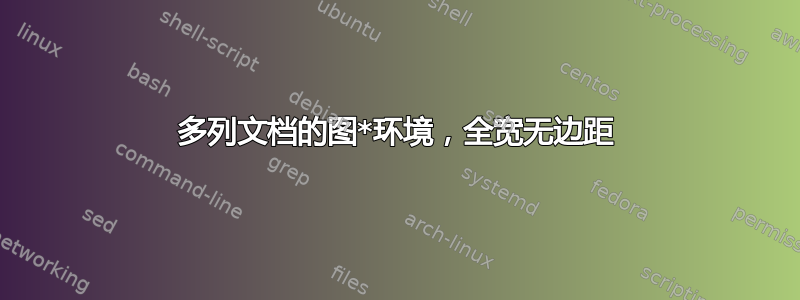
哪个宽度,而不是\textwidth(如建议的那样)这里),我可以在这里使用它来避免收到“Overfull \hbox”警告吗?我预计它是页面宽度减去边距。
\documentclass[twocolumn, draft]{article}
\usepackage{subfig}
\usepackage{graphicx}
\begin{document}
\begin{figure*}
\begin{center}
\subfloat %[] if you want labeled subfigures.
{
\includegraphics[width=0.5\textwidth]{example-image-a}
}
\subfloat
{
\includegraphics[width=0.5\textwidth]{example-image-a}
}
\end{center}
\caption{Your caption here}
\end{figure*}
\end{document}
给予
段落第 11-16 行的 \hbox 过满(宽 13.33331pt)
[][] |
顺便说一下,使用四个子图会导致“ \hbox 过满(26.66663pt 太宽)”。
答案1
这里的罪魁祸首不是\textwidth,而是您的因素0.5导致两个图像的总长度为0.5\textwidth+ 分隔符长度 + 0.5\textwidth> \textwidth。这会导致你的盒子太满。
只需使用该因素,例如使用0.485如以下 mwe 中所示(我添加了包showframe以可视化打字区域和边距):
\documentclass[twocolumn]{article}
\usepackage{subfig}
\usepackage{graphicx}
\usepackage{showframe} % <============= to visiualize typing area and margins
\begin{document}
\begin{figure*}
\centering
\subfloat %[] if you want labeled subfigures.
{%
\includegraphics[width=0.485\textwidth]{example-image-a}
}%
\subfloat
{%
\includegraphics[width=0.485\textwidth]{example-image-b}
}%
\caption{Your caption here}
\end{figure*}
\end{document}
结果:
顺便说一句:因为您正在使用环境,所以figure*您可以使用\textwidth,因为figure*跨越两列。如果您使用figure您的图形放在一列中,您应该使用\columnwidth。请参阅扩展的 mwe
\documentclass[twocolumn]{article}
\usepackage{subfig}
\usepackage{graphicx}
\usepackage{showframe} % <============= to visiualize typing area and margins
\usepackage{blindtext}
\begin{document}
\begin{figure*}
\centering
\subfloat %[] if you want labeled subfigures.
{%
\includegraphics[width=0.485\textwidth]{example-image-a}
}%
\subfloat
{%
\includegraphics[width=0.485\textwidth]{example-image-b}
}%
\caption{Your caption here}
\end{figure*}
\Blindtext
\begin{figure}[!hb]
\includegraphics[width=\columnwidth]{example-image-c}
\end{figure}
\Blindtext
\end{document}
结果:





